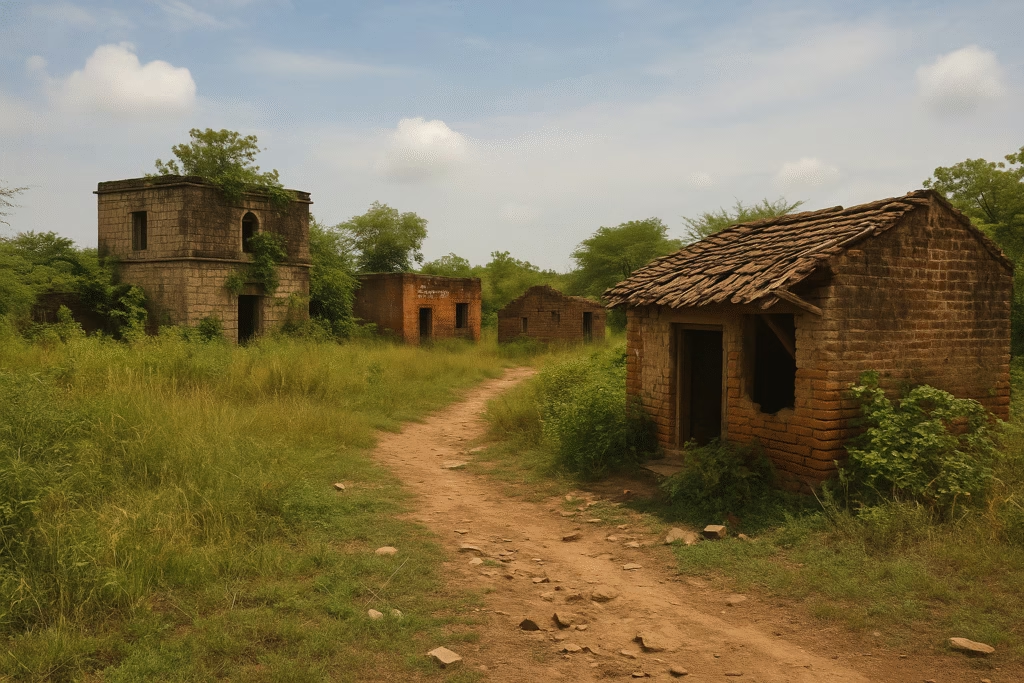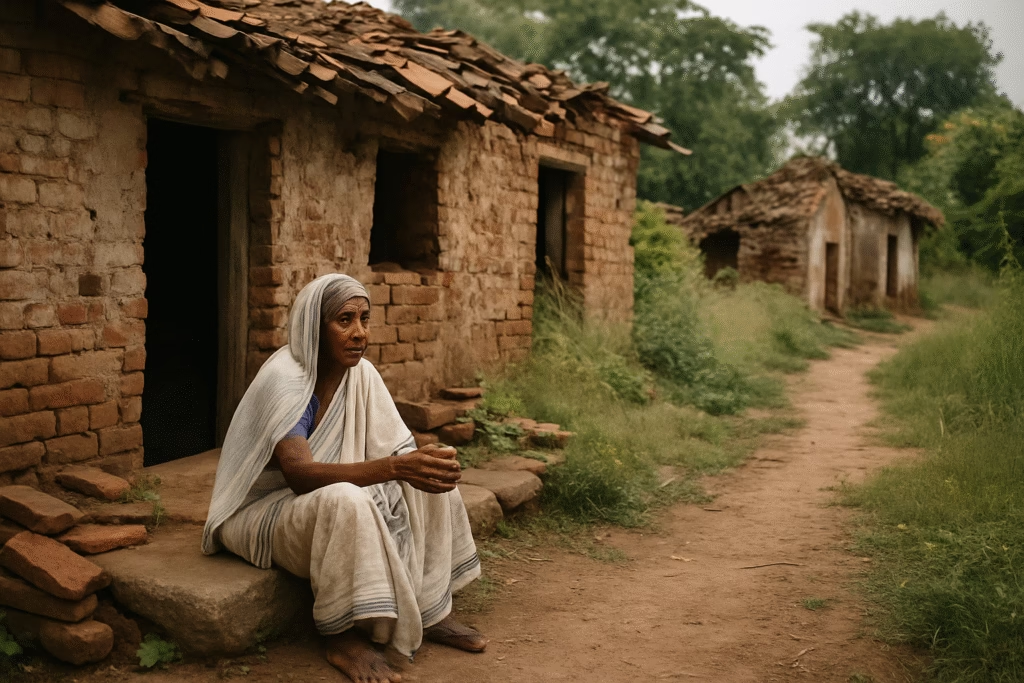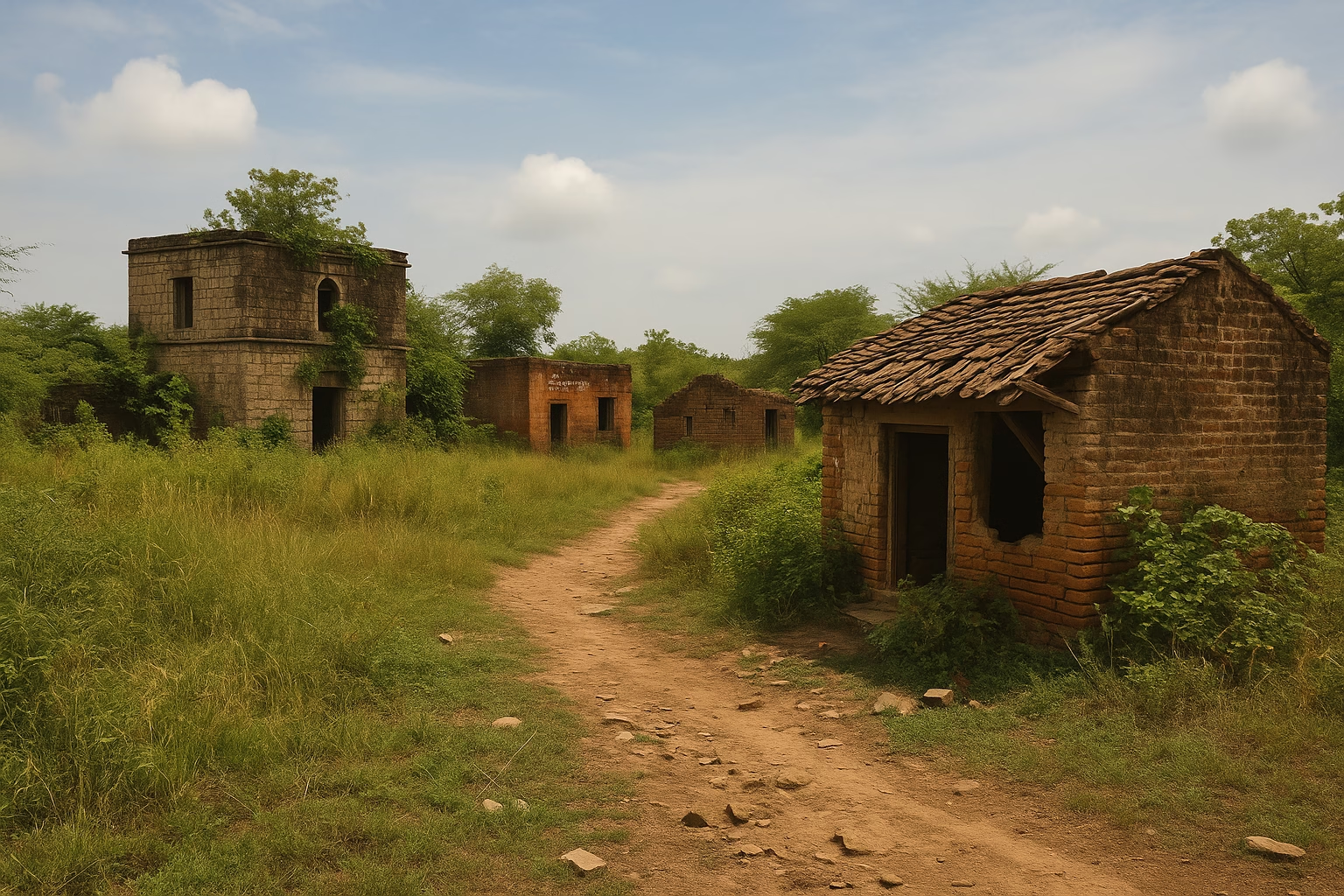The phenomenon of vanishing villages in India reveals a deeper crisis—one of disconnection, loss, and irreversible change across the rural landscape. Nestled between the forests of Odisha and the rivers of Assam lie villages that no longer exist—not because of war or disaster, but because people simply left. Some were swallowed by shifting rivers, others abandoned due to drought, and many vanished into obscurity as their last residents packed up and left for cities.

These are Vanishing Villages in india—entire rural communities disappearing quietly from the map. As India races toward urbanization, more than 3,000 villages have become “uninhabited” in the past decade alone, according to Census and Ministry of Rural Development data.
But why are they vanishing? And what happens to those left behind?
🧭 What Are Vanishing Villages in india?
“Vanishing villages” refer to rural settlements that are either:
- Completely depopulated due to migration, disasters, or infrastructure collapse,
- Swallowed by geography—such as rivers, mountains, or erosion,
- Or absorbed silently into towns, losing their identity.
Many of these vanish without news coverage, memorials, or even digital records. Their temples stand empty, wells dry up, and homes fall apart slowly—like fading memories.
🌾 Why Are Villages Vanishing in India?
🔹 1. Mass Migration to Cities
Mass migration has been one of the primary forces behind the rise of vanishing villages in India, especially in drought-prone and border regions. India’s youth are moving to Tier-1 and Tier-2 cities in search of jobs, education, and better infrastructure. Villages with no schools, roads, or mobile networks become ghost towns when the younger generation leaves.
“My village in Jharkhand had 12 families in 2012. By 2023, only my parents remained. They finally moved to Ranchi last year,” says Ravi, a 28-year-old factory worker in Pune.
🔹 2. Climate Change & Disasters
Floods in Bihar, droughts in Maharashtra, and landslides in Uttarakhand have wiped out hundreds of small villages. Once displaced, few residents return—especially if the village lacked government support.
🔹 3. Development Projects & Dams
Major infrastructure projects (dams, mining zones, highways) have displaced entire villages. Sometimes they’re resettled, but often, original communities fracture permanently.
Example: The Sardar Sarovar Dam displaced over 250 villages, some of which were never officially rehabilitated.
🔹 4. Neglect & Lack of Basic Services
Many villages are isolated from state services—no roads, no electricity, no jobs. In states like Odisha, Madhya Pradesh, and Chhattisgarh, dozens of hamlets exist without connection to the outside world, making it easy for them to disappear unnoticed.
📉 The Numbers Behind the Disappearance
According to the 2011 Census and updates from the Ministry of Rural Development:
- Over 3,000 villages are officially “uninhabited.”
- In Maharashtra alone, 500+ villages have seen over 80% depopulation.
- Bundelkhand, Telangana, and Assam show similar patterns—villages with under 10 people or none at all.
And yet, most are still marked on maps—ghost names on satellite images.

🧓 Who Gets Left Behind?
Many elderly residents in vanishing villages in India live in isolation, with memories as their only company and no access to basic services. Not everyone migrates. Elderly residents, farmers with ancestral land, or people with no resources to move often remain. These individuals live in near-total isolation, with no schools, shops, or transport.
“There’s no bus now. No school. My daughter visits once a year,” says Kamla Devi, 74, from a nearly deserted village in western UP.
They live with crumbling homes, wild overgrowth, and memories of what once was a full, thriving village. Sometimes, they’re the only residents for miles.
📸 Visual Clues: Signs of a Vanishing Villages in india
- Abandoned Schools – Classrooms filled with dust and silence.
- Temples with No Devotees – Rituals stopped long ago.
- Collapsed Roofs – Brick homes with trees growing inside.
- Dry Wells and Broken Handpumps – No maintenance for years.
- Cattle wandering alone – Owned by no one.
These places are not destroyed—they’re slowly fading.
READ : 10 Most Dangerous Haunted Places in North India – PLEASE DON’T GO
🗺️ Real-World Examples of Vanishing Villages
🔹 Majuli Island, Assam
India’s largest river island is shrinking due to Brahmaputra erosion. Villages like Ahatguri and Dakhinpat are already underwater or half-displaced.
🔹 Bundelkhand, UP/MP Border
Bundelkhand stands as one of the starkest examples of vanishing villages in India, where centuries-old hamlets are now reduced to ruins. Villages in Lalitpur, Tikamgarh, and Chhatarpur are being abandoned due to water crisis and agrarian stress.
🔹 Koyna Forest Villages, Maharashtra
Dozens of tribal settlements were displaced for dam projects, left unmarked on new maps.
🛑 What’s Being Done?
While the government tracks “abandoned villages” in census data, no major national policy exists to address the emotional, cultural, and demographic impact of vanishing villages.
NGOs like PRADAN, SEEDS, and Gram Vikas are documenting village decline and helping some families relocate with dignity. But large-scale action is missing.
🔍 What We’re Losing
- Languages & Dialects: Some vanishing villages speak tongues no longer used elsewhere.
- Oral History & Folklore: Stories told for generations disappear when a village dies.
- Sacred Places: Trees, ponds, shrines—spiritual life bound to land vanishes too.
- Local Economies: Potters, weavers, and farmers disappear without a local economy.
We’re not just losing homes—we’re losing entire microcultures.
📢 Why You Should Care
- Urban growth is linked to rural decay—we can’t build smart cities while letting the roots rot.
- Villages are repositories of traditional knowledge, resilience, and ecological harmony.
- Documenting and understanding this process helps us plan better rural development, migration support, and disaster resilience.
🧭 Final Thoughts
Vanishing villages in India represent more than demographic shifts—they reflect the quiet unraveling of rural life, identity, and heritage. In the race to modernity, we’re leaving behind the very foundation of India’s soul: the village. Unless urgent action is taken, the list of vanishing villages in India will only grow—alongside our collective silence.
If we do not act, we will soon have maps filled with names—but no people, no culture, and no memory of what they once meant.
📌 Stay Updated
Bookmark Time of Hindustan for more News and update.


[…] READ MORE. :Vanishing Villages in India: The Silent Disappearance of Rural Life […]